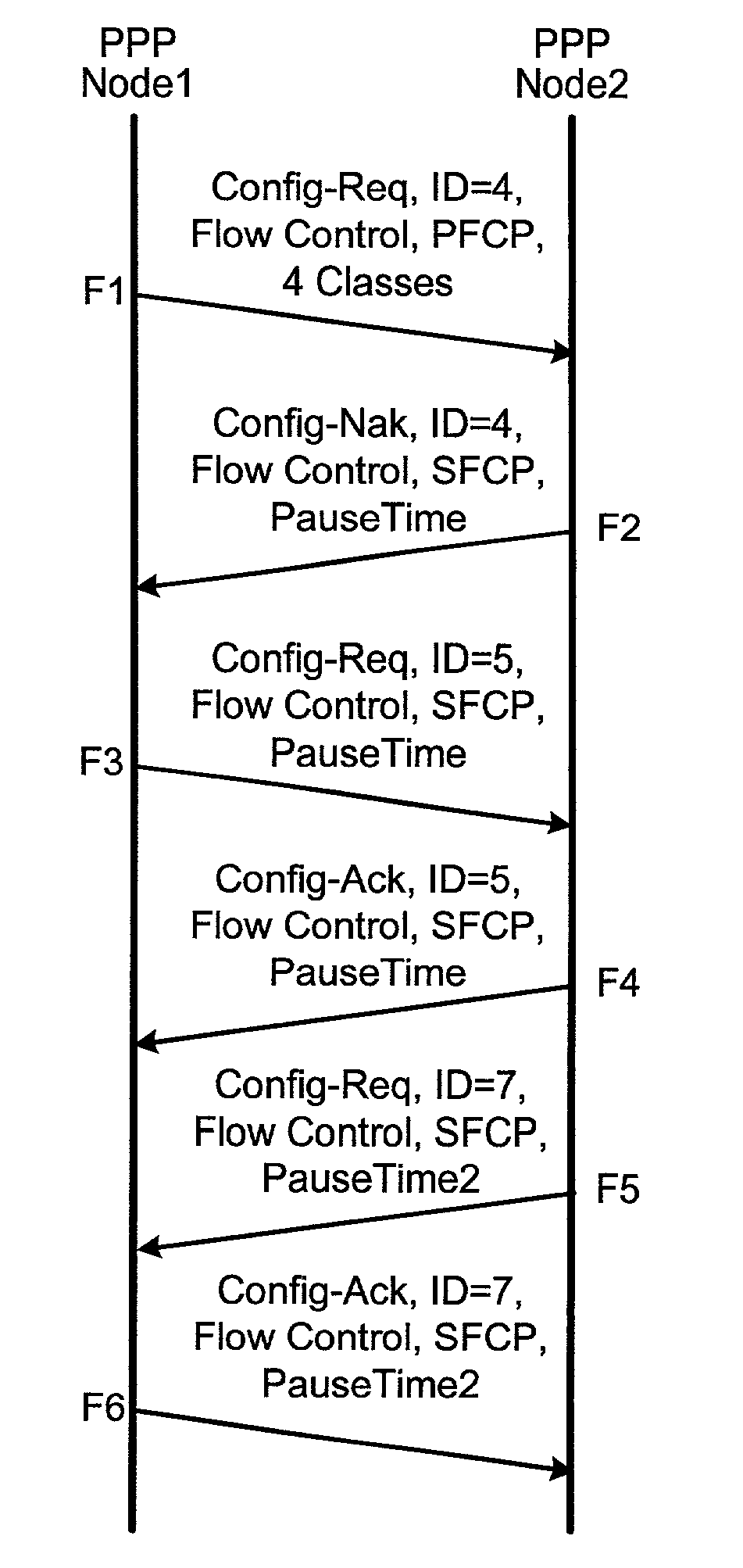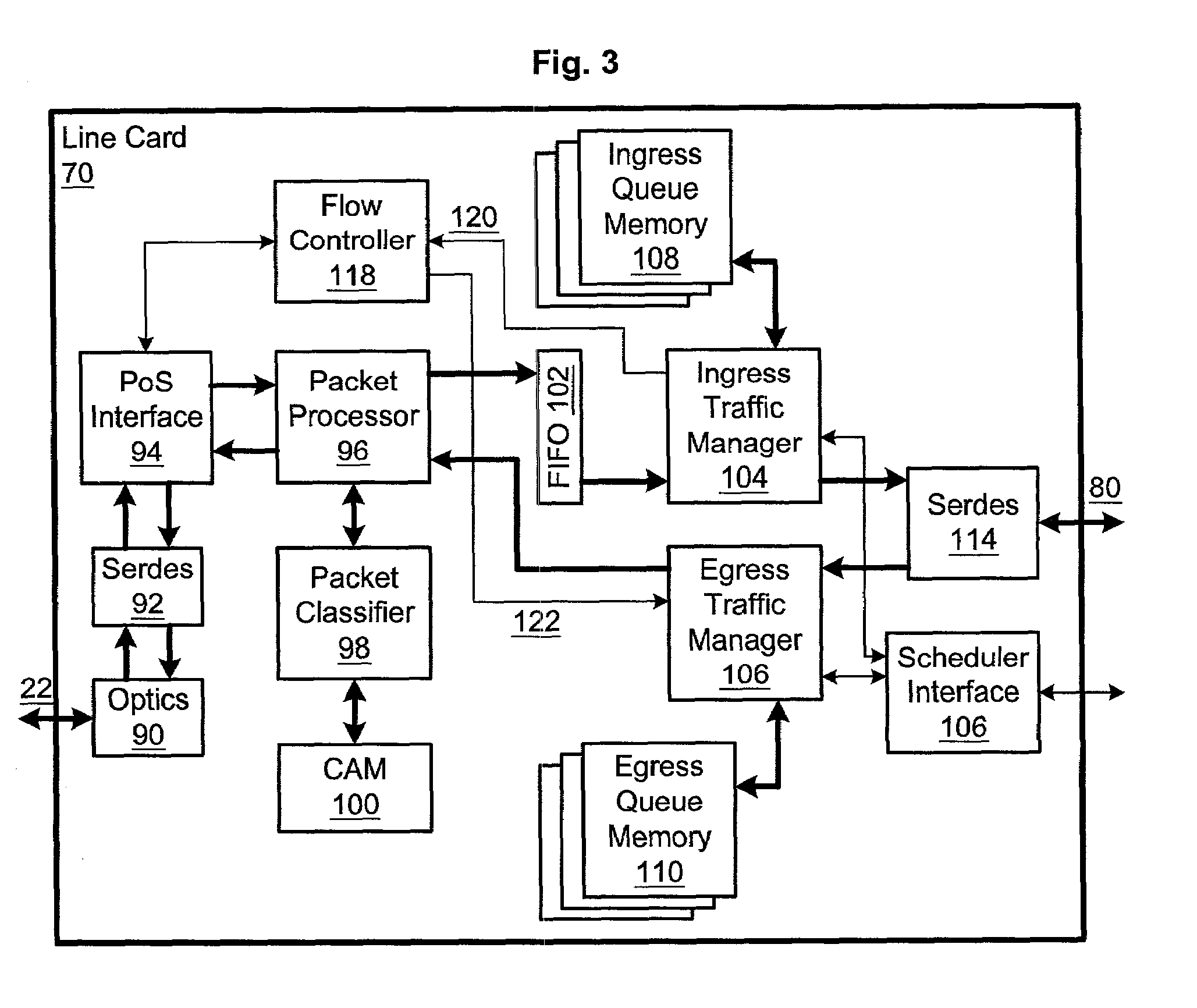Point-to-point protocol flow control extension
a protocol and flow control technology, applied in the field of point-to-point data linklayer protocols, can solve the problems of buffer overflow and data loss, tcp connections cannot effectively control (or even be aware of) the data rate on any particular intermediate ppp link of their end-to-end path, etc., and achieve the effect of less disruption
- Summary
- Abstract
- Description
- Claims
- Application Information
AI Technical Summary
Benefits of technology
Problems solved by technology
Method used
Image
Examples
Embodiment Construction
[0023]The preferred embodiments are described below with reference to particular implementations such as might exist in a high-speed router. Such implementations are exemplary, as a high-speed router is just one type of packet-processing device that uses point-to-point protocol communications and could therefore benefit from the present invention. In general, a “packet-processing device” could be a router, a layer-2 switch, a gateway, an agent, a general-purpose computer, or a subcomponent of one of these, such as a line card or a network interface card.
[0024]As an introduction, FIG. 1 shows a hypothetical network segment 20. Four routers 30, 40, 50, and 60 are connected by bi-directional PoS links: router 30 connects to routers 40, 50, and 60 via links 32, 34, 36, respectively; routers 40 and 50 connect via link 42; and routers 50 and 60 connect via link 52. It is not necessary to operation of one PoS link that each of these links is a PoS link—for example, some links could use ISD...
PUM
 Login to View More
Login to View More Abstract
Description
Claims
Application Information
 Login to View More
Login to View More - R&D
- Intellectual Property
- Life Sciences
- Materials
- Tech Scout
- Unparalleled Data Quality
- Higher Quality Content
- 60% Fewer Hallucinations
Browse by: Latest US Patents, China's latest patents, Technical Efficacy Thesaurus, Application Domain, Technology Topic, Popular Technical Reports.
© 2025 PatSnap. All rights reserved.Legal|Privacy policy|Modern Slavery Act Transparency Statement|Sitemap|About US| Contact US: help@patsnap.com



